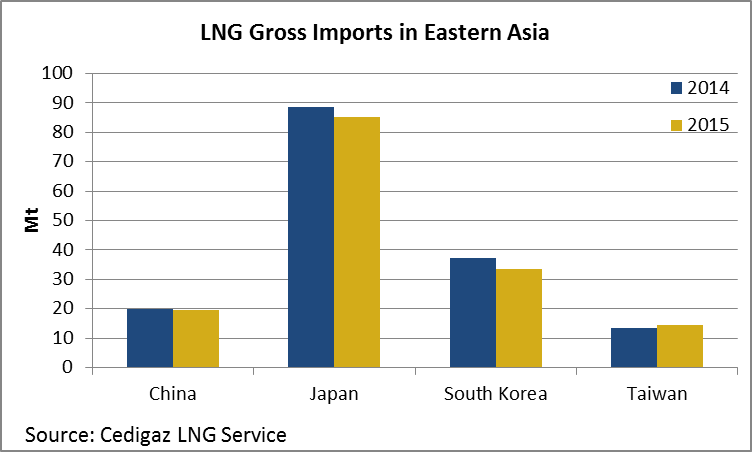Natural gas demand grew by 1.6% in 2015 according to Cedigaz after having stagnated in 2014. However, this apparent, if modest, resumption of global gas market growth can be misleading as the higher growth rate is essentially the result of a weather driven recovery in the EU where demand rebounded by 4.5% after having dropped by 11% in 2014. For the rest of the world gas demand growth was actually lower than in 2014 (1.2% vs. 2%) and was pulled by a limited number of countries led by the US. The inability of natural gas demand to keep pace with an accelerated supply growth, led to an imbalance in the global gas market and to a price weakness which is expected to continue in the short and medium-term, amid a sluggish economic environment.
The year 2015 saw considerable changes in macroeconomic and price factors. Economic growth stood at 3.1%, lower than at any time since 2012 (3.3/3.4%) and also lower than the 10‐year trend (3.8%). This was the result of the relatively modest growth of the emerging countries (4% compared with 6% over ten years), although western countries’ growth rate exceeded the 10‐year average (1.9% compared to 1.5%). International crude oil prices fluctuated to new lows, with Brent averaging 52/bl, down by 47% from the previous year.

